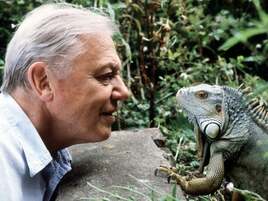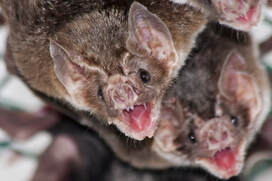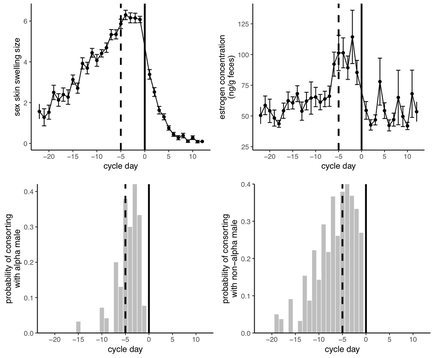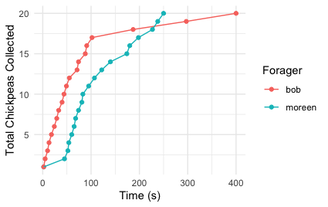Baboon reproduction: Linking sexual swellings, estrogen, and mating behavior
This data expedition uses real data on baboon reproduction to test hypotheses about animal signals and mating. The lesson is designed for undergraduates with little or no exposure to R or other programming software, but can easily be adapted for more advanced students. After a brief Powerpoint introduction to baboon sociality, reproduction, and mate-guarding, students will generate predictions to two hypotheses about the dataset. Students will then work through a script in R that generates several descriptive statistics and several graphs to test those predictions. Students will have to adjust parts of the script to generate the stats and graphs.
This lesson was created in collaboration with Ali Galezo. This lesson would not be possible without the leadership and work of the Amboseli Baboon Research Project - in particular, Jeanne Altmann, Susan Alberts, Jenny Tung, Beth Archie, Serah Sayialel, Raphael Mututua, and Kinyua Warutere.
Below are the plots students will generate, followed by all materials needed for the lesson. Enjoy!
This lesson was created in collaboration with Ali Galezo. This lesson would not be possible without the leadership and work of the Amboseli Baboon Research Project - in particular, Jeanne Altmann, Susan Alberts, Jenny Tung, Beth Archie, Serah Sayialel, Raphael Mututua, and Kinyua Warutere.
Below are the plots students will generate, followed by all materials needed for the lesson. Enjoy!
| Lesson plan |
| Powerpoint |
| Lesson materials: R script, dataset, instruction for RStudio, worksheet |
| Gesquiere et al_Sexual swellings, estrogen & male consortships_2007 |
Planet Earth: Move aside, Sir David Attenborough!

This activity is designed to get students to start asking scientific questions- in the format of Tinbergen's 4 questions - about animal behavior. This lesson plan is in the form of a google doc, which will make it easier to use with online teaching. See the google doc here, and feel free to make your own copy!
Reciprocal food sharing: Vampire bat case study

This is a short case study in which students break into groups and interpret data presented in the classic Wilkinson 1984 paper, Reciprocal food sharing in the vampire bat. This case study takes 30 minutes and works well on zoom or in person. Access the slides here.
Geometry for the Selfish Herd: Interactive simulation
This is a 20-minute interactive lesson that works well on Zoom. Students will 'act out' Hamilton's selfish herd of frogs along the edge of a circular pond. Someone will record the data with this google doc to see if the class recapitulates Hamilton's simulation. A good way to start thinking about the ecological drivers of aggregation and group-living.
| Geometry for Selfish Herd |
Optimal foraging activity
This lesson, designed for middle schoolers, can easily be adapted for high school or college students. It's also somewhat modular, so you can just use the first exercise to demonstrate how search time changes as function of 'prey' density. I did that in my lifelong learning course to produce this plot. I designed this lesson for SciREN Triangle, a program that connects educators to lesson plans designed by scientists.
| SciREN Foraging Activity |
GALS lesson plans
I helped create the curriculum for GALS, a 2-week outdoor science program for high-school students who identify as female or nonbinary. The curriculum focuses on hands-on and place-based lessons. You can access all lessons from our last program here.



